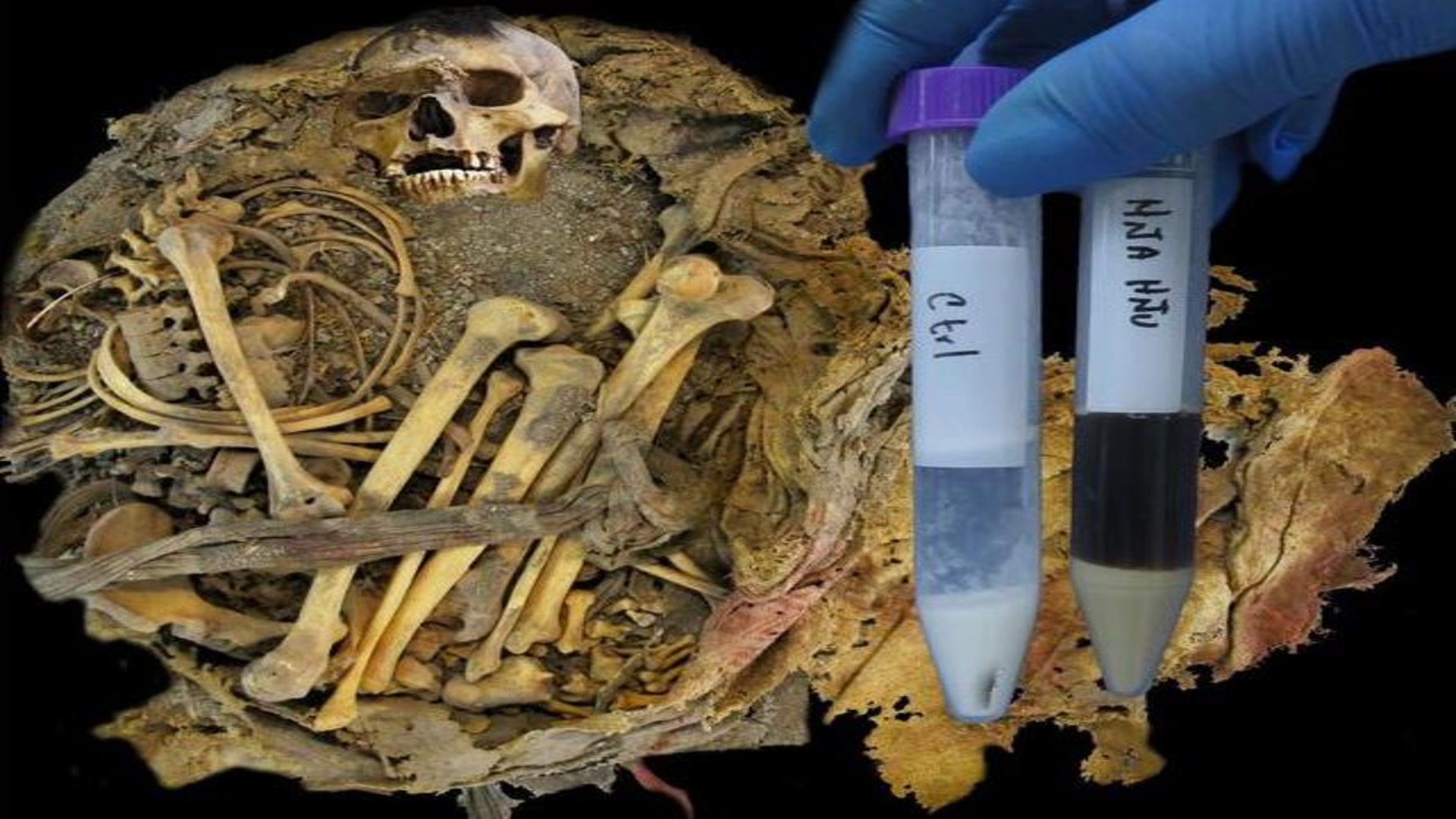Remarkably preserved remains of a 1,000-year-old individual, known as the Zimapán man, have provided scientists with a unique insight into the ancient human gut microbiome. Discovered in a cave in Zimapán, Mexico, this individual was naturally mummified under conditions favorable for preservation. Researchers believe he likely held a significant status within the Otopame culture, an extinct group of hunter-gatherers. The findings, detailed in a study published in PLOS One, reveal important aspects of the man’s life and the ancient culture he belonged to.
The discovery was made in 2014 when local residents from El Saucillo, Zimapán, Hidalgo, unearthed the mortuary bundle in a sheltered rock formation. The conditions in the cave allowed for the preservation of soft tissues, including skin, fragments of the intestinal wall, and fecal remains. Researchers, led by Santiago Rosas-Plaza from the National Autonomous University of Mexico, utilized standard analytical methods to study these remains, marking a significant advancement in the field of ancient microbiome research.
Insights into Ancient Gut Microbiome
The individual, designated as Hna Hnu, was a male who died between the ages of 21 and 35. His burial involved layers of maguey fiber mats and woven cotton, indicating a respected position in his society. The outer layer consisted of a mat made from long, intertwined maguey fibers, with a finely woven sheet of native brown cotton beneath.
Using 16S rRNA gene sequencing, researchers identified various families of bacteria present in the mummified intestinal tissue and preserved feces. Notable bacteria included Peptostreptococcaceae, Enterobacteriaceae, and Enterococcaceae, which are known to exist in the human microbiome and suggest a long-standing symbiotic relationship with humans. The presence of Romboutsia hominis, previously unrecorded in ancient microbiomes, marks a significant milestone in microbial evolution research.
Linking Ancient Diets and Microbiomes
The study emphasizes the integration of anthropological, archaeological, and microbiome data as a powerful tool for understanding human evolution and the intricate relationships between biological and social environments. Researchers suggest that the Zimapán paleofeces may contain authentic ancient gut bacteria, providing further context to the life of the individual.
The preservation techniques employed by the culture highlight advanced methods of body preservation. The authors noted the complexity of the fabric’s knots, which required unique arrangements. For nearly eight years, Master Luisa Mainauo has led efforts to restore and safeguard the mortuary bundle, aiming to showcase this significant cultural artifact to both local and global audiences.
In conclusion, the Zimapán man not only enriches our understanding of ancient microbiomes but also casts a spotlight on the sophisticated practices of the Otopame culture. The implications of this research extend beyond archaeological interest, offering insights into the evolution of human health and diet over the millennia.
